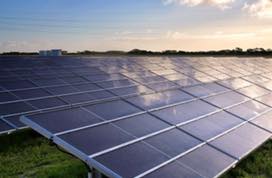Plans to turn a disused north Queensland gold mine into one of Australia’s biggest solar and storage plants have passed another key milestone, with phase one of the project – construction of a 50MW solar array – reaching financial close.
Genex Power, the project’s developer, said on Tuesday it had finalised funding requirements for Kidston Phase One solar Project (KSP1), via a $100 million debt funding deal with the Clean Energy Finance Corporation and Société Générale.
In addition to the debt and equity funding, Genex said it would also draw on $8.85 million of grant funding from ARENA, provided through its Large-Scale Solar Competitive Round, for project development costs.
The company also confirmed the appointment of First Solar as the solar module supplier for the first installation, with the US-based company locked in to provide 63MW, or 540,000 advanced thin-film PV modules.
Genex said that this latest development milestone meant the project was on track to start sending solar power to the grid by the end of 2017, and for its first phase to be completed by early 2018, allowing the company to turn its attention to securing funds for the 250MW Kidston Pumped Storage Hydro Project, as well as the solar phase two, which would add another 270MW.
Genex estimates that on completion, the 250MW pumped hydro storage project will support 1,500MWh of continuous power in a single 6-hour generation cycle.
The initial 50MW solar array, which is being installed on top of the former gold mine’s tailings dump, is expected to produce around 145,000MWh a year, for which Genex has entered into a 20-year Revenue Support Deed with the Queensland government, which guarantees a minimum energy floor price.
And at a time where energy security is dominating federal and state politics, ARENA CEO Ivor Frischknecht said the landmark project would contribute towards Australia’s smooth transition to renewables.
“Kidston holds the tantalising proposition of being Australia’s first large-scale solar project capable of delivering renewable energy into the grid around the clock,” Frischknecht said in comments on Tuesday.
“The… (planned) adjacent 250MW pumped hydro storage plant Genex is developing with ARENA … would allow renewable energy to be stored through the day and delivered when needed most.”
CEFC Large-Scale Solar lead Gloria Chan also focused on the project’s contribution to managing future grid stability.
“Energy storage solutions such as pumped hydro are one of the next steps in our clean energy
transition,” Chan said.
“With the cost of solar generation continuing to decline, we are committed to working with developers such as Genex to finance opportunities that can complement Australia’s growing renewable energy capacity, by adding energy storage and grid stability services.”










